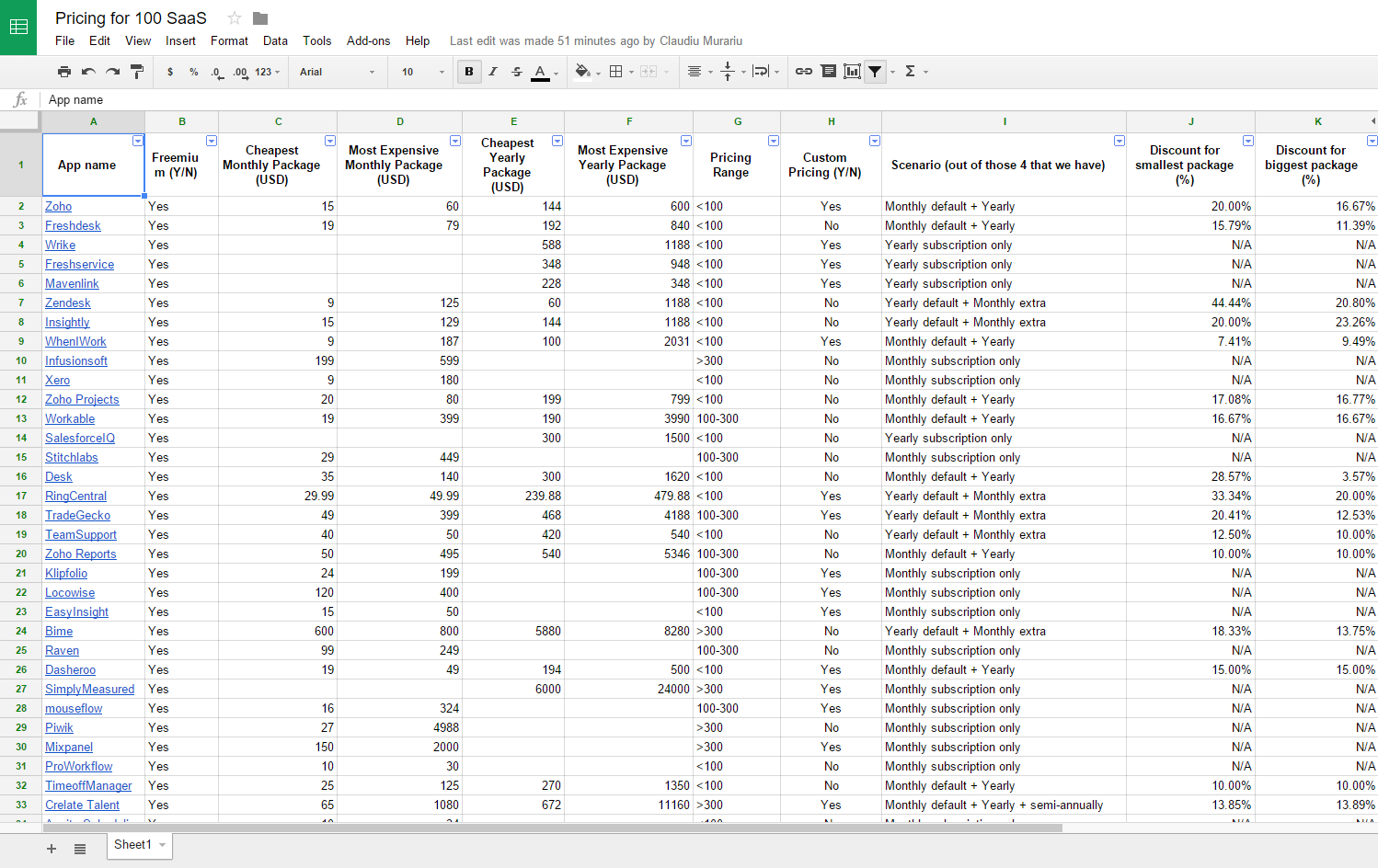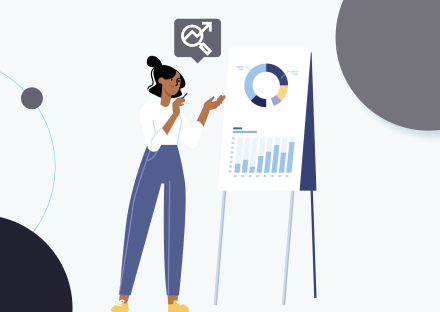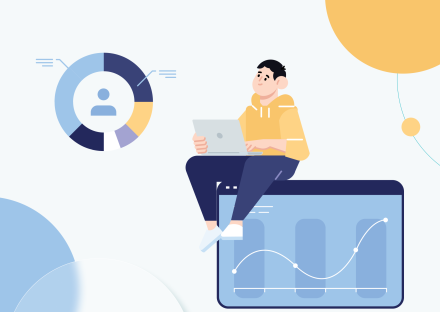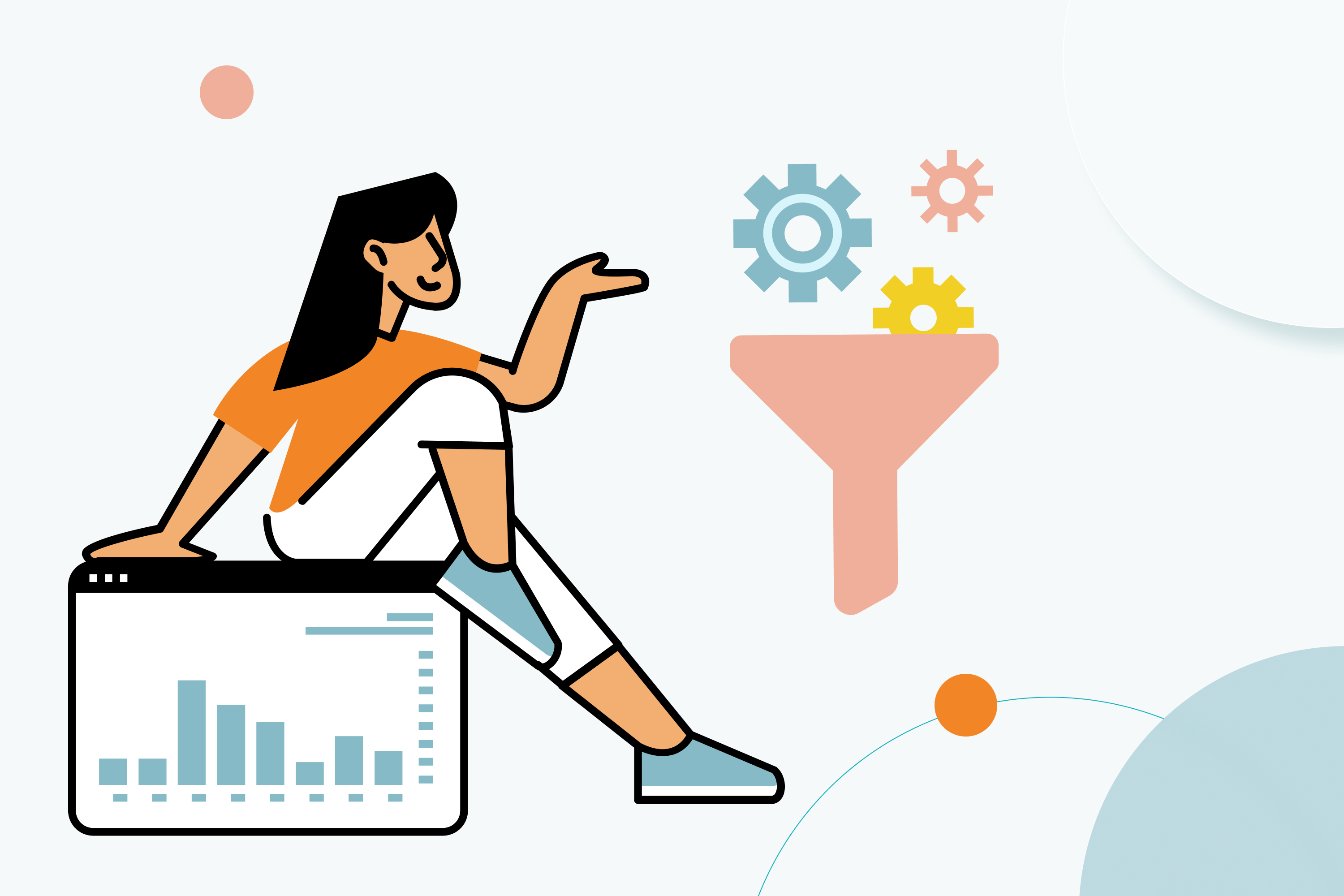In the words of jazz singer Mel Tormé, “Talking money is crass, so I’m not going to tell you what I made last year.”
When it comes to SaaS pricing, is seems that most businesses would tend to agree with Mel!
We wanted to understand the maths behind yearly vs monthly subscriptions and what, if any, experiments had been undertaken to test for the strongest model.
Here at InnerTrends, we work hard to bring you concrete actionable experiments and, as our research unfolded, it became clear that SaaS pricing is a very sensitive topic.
Emails requesting data went unanswered. Companies asked to be included off the record. It became akin to searching for the Loch Ness Monster.
Not only is pricing a sensitive subject, experimenting with pricing is also controversial among marketers. Some will tell you it’s fair game while others say it’s anything but fair!
Imagine the backlash you might face if people were to discover you offering two different prices to two different groups.
This, together with the technical challenges of A/B testing price, is one of the reasons there are so few documented pricing experiments.
Does that mean we should pack our bags, call time and go home? Absolutely not! Offering different prices to different groups of people isn’t the only way to approach a pricing experiment.
Instead, a great way to experiment with pricing is to experiment with discounts.
From a quick survey we did with different B2B SaaS vendors, we discovered yearly plans to represent between 10% and 30% of all the sales.
However, this isn’t a representative sample because it’s the type of data many people don’t like to share so take this information with a pinch of salt!
The way these discounts are calculated can have a huge impact on your bottom line with the goal being to calculate the minimum discount needed to obtain maximum profit.
There are a few metrics to consider when doing such a calculation. First though, let’s take a look at the most common SaaS pricing strategies, using examples from established companies.
SaaS pricing strategies
Monthly subscription only
From their website, “SignalMind is an online platform for agencies and freelancers to build responsive sites (and mobile sites), and manage loyalty programs for clients.”
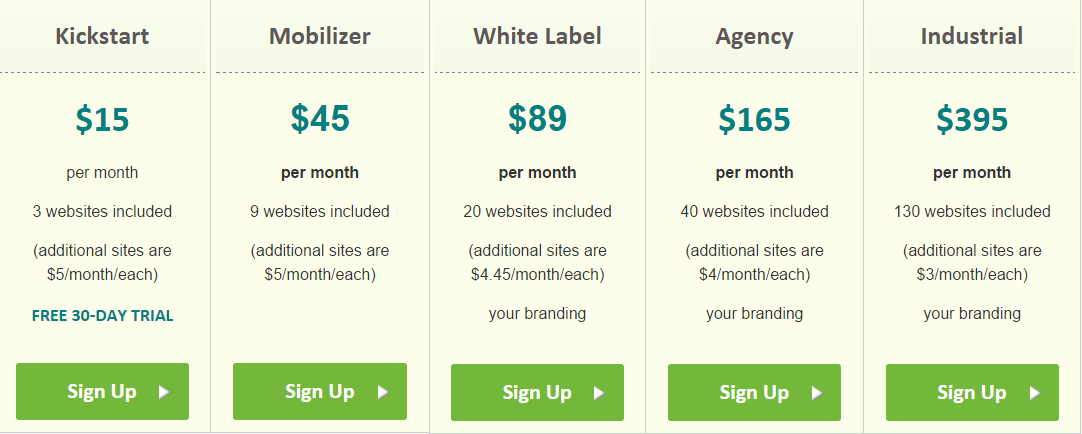
The monthly subscription is the only pricing model available and a new user has five options to choose from.
The main features of each package is displayed clearly, making it easy for a potential customer to understand which package he needs.
A free 30 day trial is available, but only on their cheapest option, the Kickstart plan.
Monthly default + Yearly
Workable offer “recruiting software for fast growing companies” and they offer both monthly and yearly subscriptions.
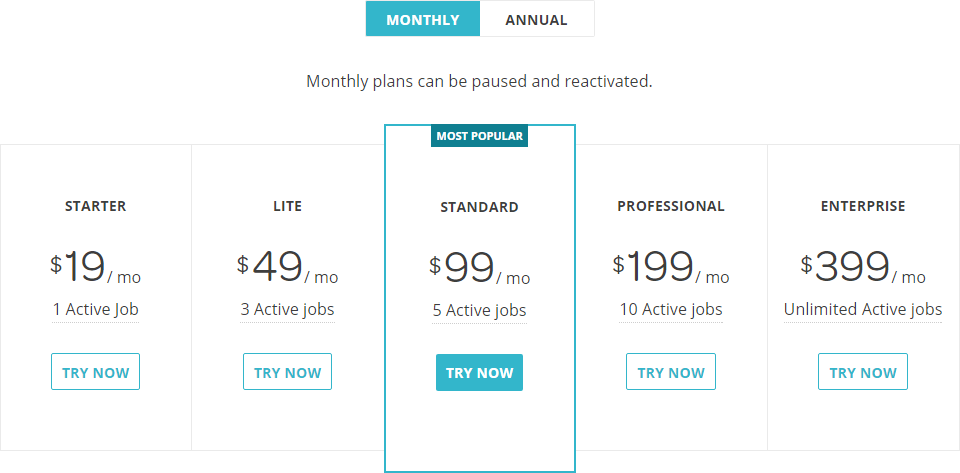
Landing on their pricing page, I was redirected to the monthly subscription plan by default, but it’s easy to switch between monthly and yearly to compare all the options.
Signing up for an annual subscription affords you two months free (compared with their standard 15 day, no credit card required, free trial.)
All of the plans offer the same features but the price increases as you add more jobs.
Yearly default + Monthly extra
Kickserv offer “field service management software that manages leads, estimates, scheduling, invoicing and payments” and, like Workable, they offer both yearly and monthly subscriptions.
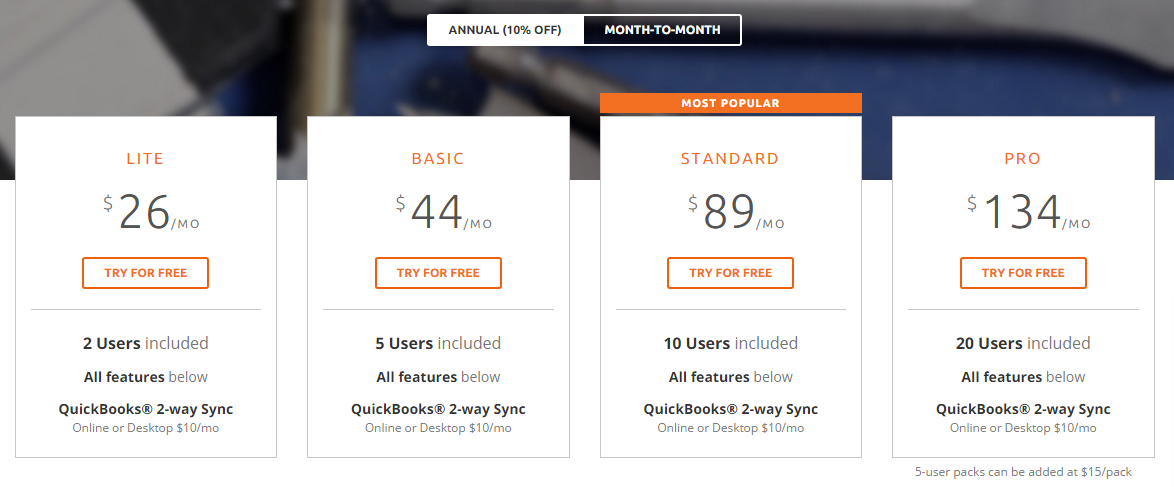
The difference is, they offer annual by default, clearly advertising a 10% discount for choosing this option.
Instead of bombarding a visitor with lots of features, they simply list the most basic features.
A drop-down menu offers a full list of features and all options include a 14 day, no credit card required, free trial.
Yearly subscription only
Ion Interactive “empower marketers to generate more leads, improve lead quality, and build deep lead profiles using interactivity” and they only offer an annual subscription.
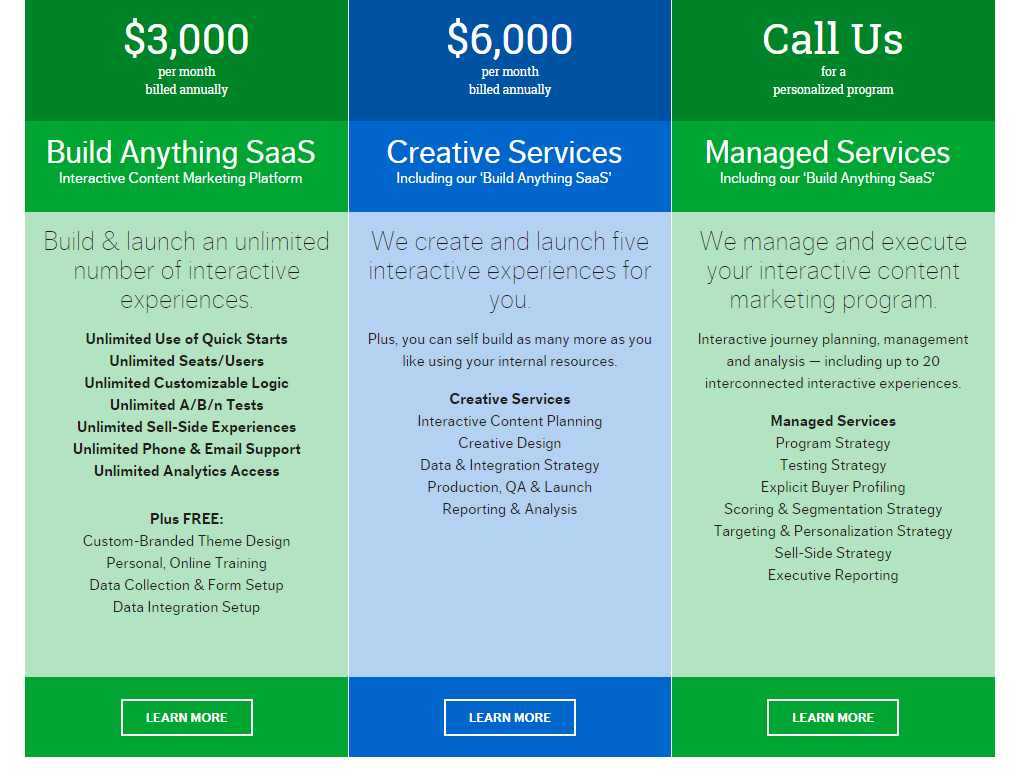
They outline the features of each option and also include an option for enterprise. As one might expect, they don’t offer a free trial but potential new customers are invited to schedule a live demo.
Having looked at the different SaaS pricing models currently being used, it’s time to think about how best to calculate that magical discount rate. There are a few different metrics to consider.
Payment authorization rates
When a user signs up for an annual plan, he can make a one time payment for the full year or 12 payments (one every month) for the same period. With the latter option, there are 11 extra times when something might go wrong with the payment.
According to our sources in the payment providers industry, between 10% and 25% of payments have issues with authorization. The number depends on audience (B2C or B2B) and business profile.
Authorization issues could be caused by a technical glitch with the bank, insufficient funds, an expired credit card or any other number of reasons, all of which result in the charge failing to be processed correctly.

It is important to note that some payment providers or companies implement advanced order recovery methods which can recover, without user intervention, up to 15% of payments that would otherwise have been lost.
A well designed automatic order recovery program via email or in-app messages can recover 60% or more of orders that failed due to authorization rates issues.
When putting all the numbers together, it turns out that from 100 users that start using your product, at the end of the year you will be left between 65 and 75 users.
If 20 users decide to pay a full year upfront, you will increase your end of the year sales by between 5 and 7%.
Churn & Renewal
The main reason people implement yearly plans is because they significantly decrease the churn rate.
The above example is built on the scenario that user churn is due to payment method problems rather than because they decided to. Benchmarks show that a rate of 5% of monthly churned users is very common.

So, if you add a natural churn rate of 5% to the above scenario, out of 100 users, at the end of one year you are left with less than 40 users.
However, if 20 out of those 100 pay for a year upfront, at the end of the year you’ll have a 10% increase in sales.
If you have a higher churn rate of 7%, by getting 20% of yearly plans purchased upfront your increase of sales at the end of year can be even higher than 15%.
Churn and renewal are the hairy beast of the SaaS world. David Skok has some great content to help make your calculations and estimations much more accurate.
Increase in conversion rate
Offering discounts can also have an impact on your conversion rate, specifically for people for whom pricing is an issue.
With the above simulation in mind, if offering a discount will bring 10 more users who pay a year upfront, your sales will increase by more than 30%.
Knowing how much profit yearly plans can bring to your company is the scientific way to calculate how much discount you can offer and still be highly profitable.
Discounts benchmark
You can download the raw SaaS pricing data from our analysis and identify your own competitors and their approach.
Here’s what we learned from our SaaS pricing experiment:
Lesson #1
41 out of the 100 companies offer monthly subscriptions only and 9 offer yearly subscriptions only.
Lesson #2
That leaves 50% of the SaaS products we analysed offering yearly or quarterly plans in addition to their monthly plans.
Lesson #3
Discounts for packages with smaller prices range between 7.4% and 44%. More than half of all the companies that offer a discount offer it between 15% and 20%.
Lesson #4
Discounts for packages with higher prices range between 3.5% and 34%. Most discounts are also between 15 and 20%.
Lesson #5
All the companies that offer yearly plans offer discounts on them.
Lesson #6
64% of the companies we verified also offer custom pricing.

So, what does all this mean for you and your pricing strategy?
It’s clear that while there is no one size fits all solution, offering a carefully considered discount on annual plans can have a massive impact on both your user retention rate and your profit.
Looking for deep insights into how your customers use your product?
InnerTrends can help. You won’t have to be a data scientist to discover the best growth opportunities for your business, our software will take care of that for you.
Schedule a Demo with us and witness with your own eyes just how powerful InnerTrends can be.
